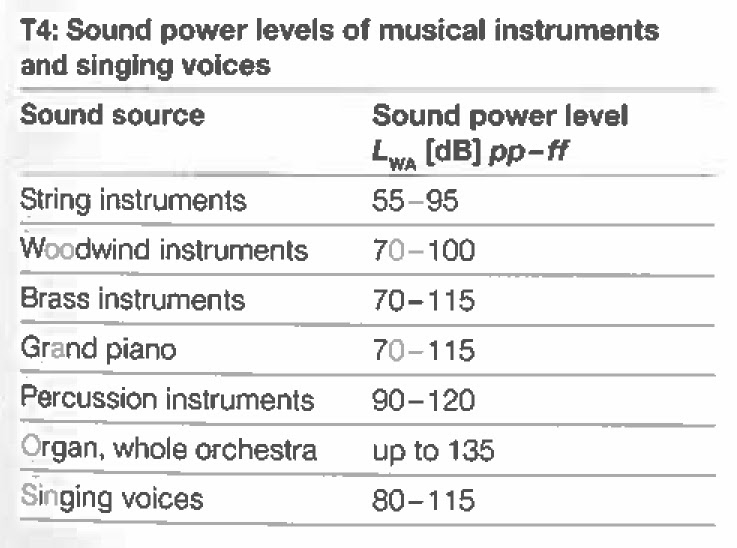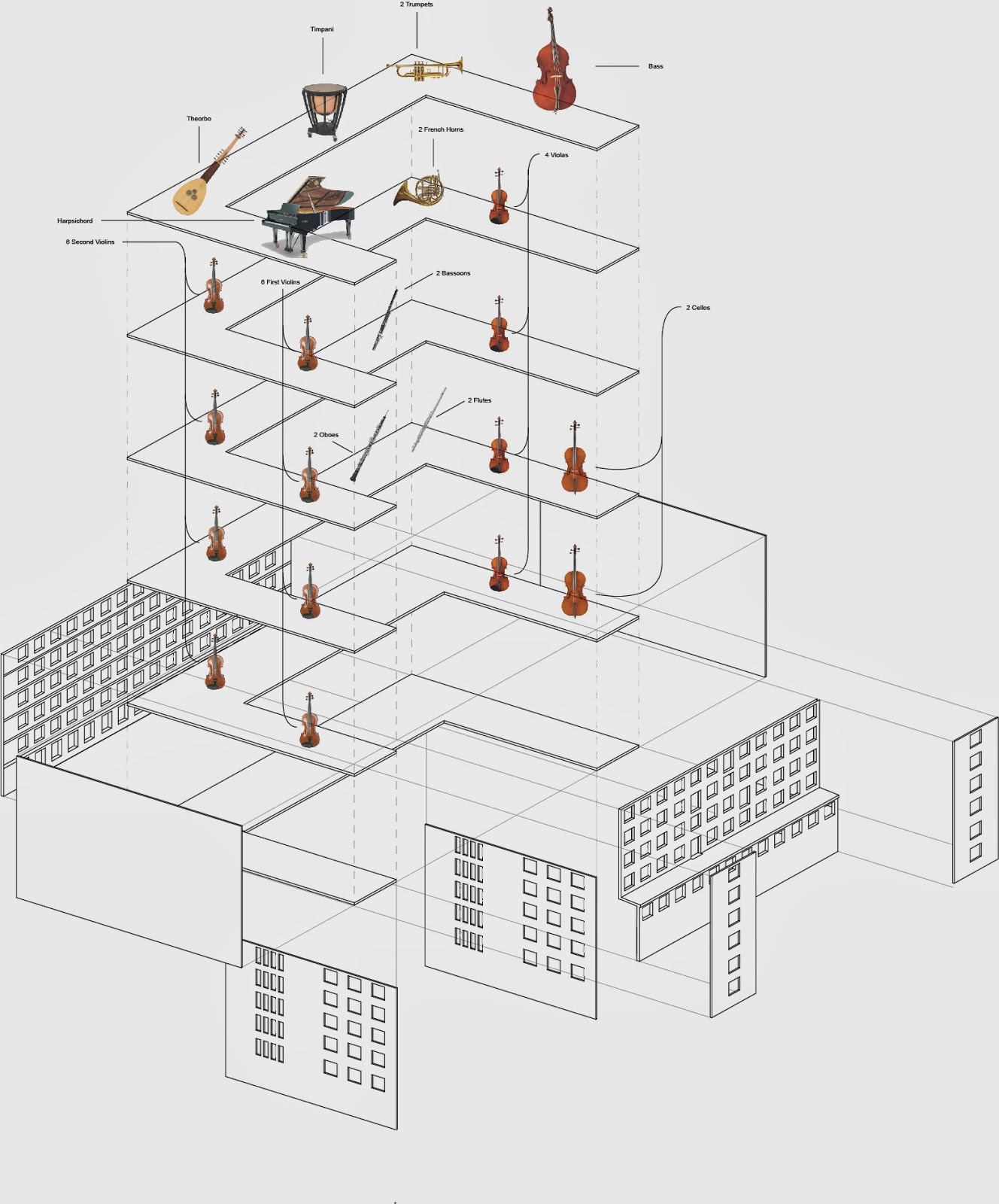P4 / Re-inhabitation / Collage showing break with facade
torsdag den 3. april 2014
P4 / Re-inhabitation / Experiencing Musikhuset
Experiencing Musikhuset from Kristoffer Codam on Vimeo.
onsdag den 2. april 2014
P4 / Re-inhabitation / Interview with trumpeter, Anders Larsen
Rehearsal Space - adaptable surfaces, reflective or absorbent
Hallways
Symphonic Hall - Larger surfaces breaks up deep tones
Symphonic Hall - Smaller surfaces breaks up high tones
Symphonic Hall - Red carpet can be pulled out for damping the sound.
Symphonic Hall - The farther the sound has to travel, the worse it gets.
Sinfonietta Rehearsal
mandag den 31. marts 2014
P4 / Re-inhabitation / Interview with trumpeter, Anders Larsen
Rehearsal
Rehearsal
"He would prefer a light room with 3-4 meters to the ceiling, glass can be used as a reflective surface."
"He rehearse 4-5 hours daily alone."
Performance
"Larger surfaces are used to break up sound from deeper tones and smaller surfaces are used to break up lighter tones."
"Longer reverberation time blurs the sound, but makes the instrument still sound when not playing."
"Music next to the ear makes the experience more intimate."
"The longer the sound has to travel the worse the sound gets."
"Terraces breaks up the sound."
"When playing in an orchestra one is very much aware of the other musicians."
"In the ceiling of the symphonic hall there are huge adjustable panels."
Individual instruments
"The French horn plays backward and at least 2 meters to a wall is required."
"Trumpet and Trombone are directional."
"The floor underneath the Bass is able to vibrate so the the floor does not absorb the deep tones."
"Clarinet, Piano, Violin, and Viola are warm and intimate instruments."
"Cello are lifted because it is played near the ground."
"Bassoon is clearly deeper than the Flute."
"Percussion needs a lot of space."
onsdag den 5. marts 2014
P3 / Reprogramming / Diagram
3
a Reflections from the rear wall with a long delay increase the risk of echoes. Right-angles are particularly treacherous because the sound is reflected back parallel to its original direction.
Disturbing reflections can be avoided by:
b including absorbent surfaces,
c positioning the rear part of the ceiling at an angle,
d including structured wall surfaces.
- MOMMERTZ, Eckard (2009) Music, Acoustics and Sound Insulation, Birkhäuser, p. 17
P3 / Reprogramming / Diagram
1 How the plan shape shape of a room affects the early reflections from the side walls
a Narrow, rectangular rooms send reflections from the side walls to the seats.
b If the room widens towards the rear, the sound is reflected to the rear of the room.
c Concave plan shapes focus the soundwaves, which usually leads to disturbing concentrations of sound
2
a The soundwave illustrates flutter echoes between parallel wall surfaces.
b This can be avoided by designing the stage to taper towards the rear.
c If the walls taper inwards a little, the soundwave is reflected back and unpleasant flutter echoes can be the result.
- MOMMERTZ, Eckard (2009) Music, Acoustics and Sound Insulation, Birkhäuser, p. 16
tirsdag den 4. marts 2014
tirsdag den 25. februar 2014
P3 / Reprogramming / Inspiration
Trevor Grahl - Piece composed for Noorderkerk, 2010
"One of the things he discovered early on was the effect of getting the musicians to play woodwinds behind the doors of three smaller rooms connected with the main space of the church. Behind closed doors, it made them not only quiet, but also like their sound is coming from somewhere deep inside the building."
- Amsterdam Academy of Architecture (2012) Music, Space and Architecture, Architectura & Natura Publishers, p. 96
Trevor Grahl - Piece composed for Noorderkerk, 2010
"One of the things he discovered early on was the effect of getting the musicians to play woodwinds behind the doors of three smaller rooms connected with the main space of the church. Behind closed doors, it made them not only quiet, but also like their sound is coming from somewhere deep inside the building."
- Amsterdam Academy of Architecture (2012) Music, Space and Architecture, Architectura & Natura Publishers, p. 96
P3 / Reprogramming / Inspiration
Forty Part Motet (2001) by Janet Cardiff
"She took each voice from Thomas Tallis' Spem in Alium nunquam habui, and recorded it individually so that each voice could be given its own speaker within a space. Visitors to the installation could walk through the space and experience the music either as a whole or they could privilege an individual singer, depending on where they stood in the room and how they moved through it."
- Amsterdam Academy of Architecture (2012) Music, Space and Architecture, Architectura & Natura Publishers, p. 73
Forty Part Motet (2001) by Janet Cardiff
"She took each voice from Thomas Tallis' Spem in Alium nunquam habui, and recorded it individually so that each voice could be given its own speaker within a space. Visitors to the installation could walk through the space and experience the music either as a whole or they could privilege an individual singer, depending on where they stood in the room and how they moved through it."
- Amsterdam Academy of Architecture (2012) Music, Space and Architecture, Architectura & Natura Publishers, p. 73
Abonner på:
Opslag (Atom)















.jpg)


























